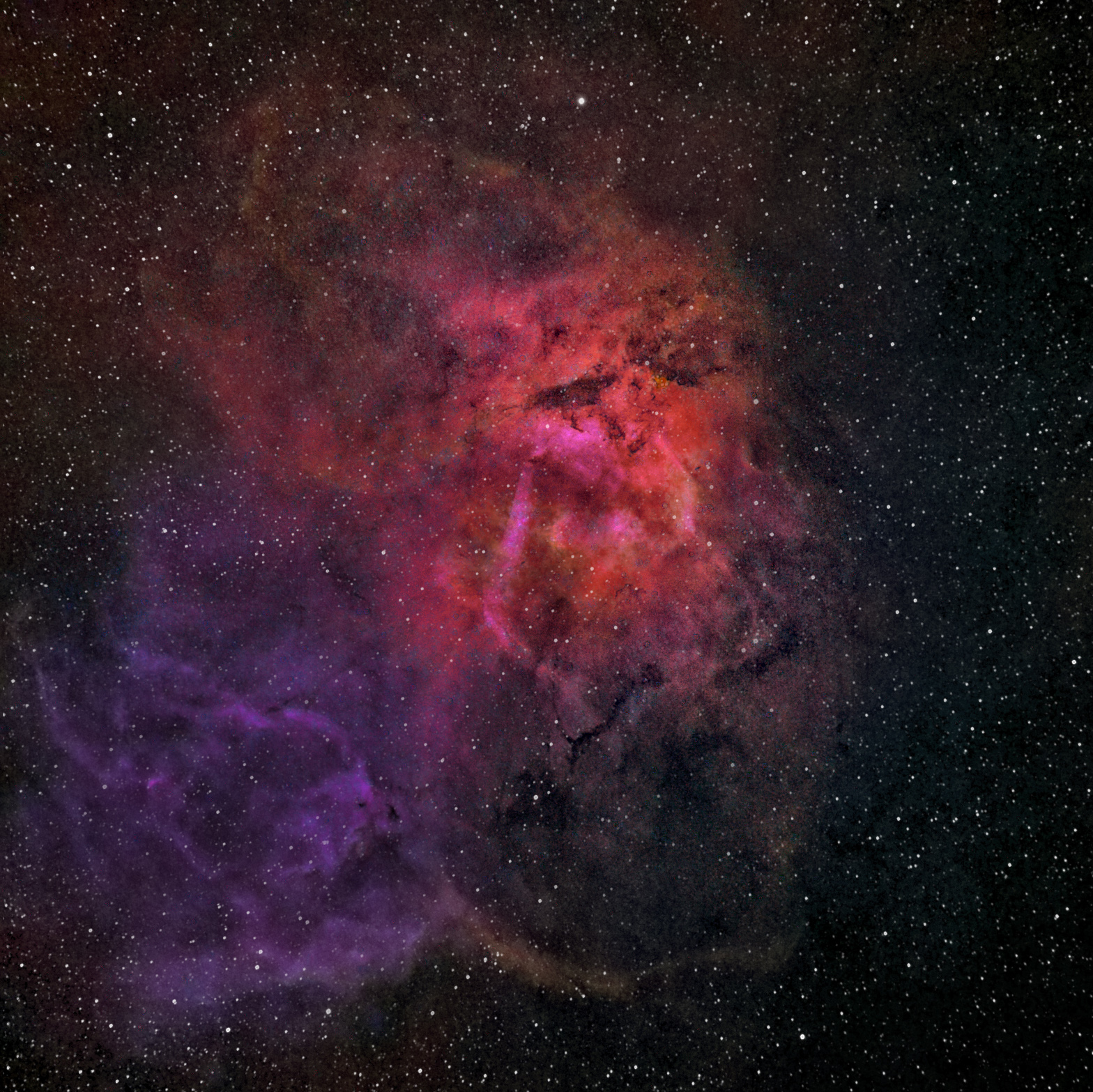Optics: Takahashi FS152, f6, 900mm
Mount: Software Bisque Paramount Paramount MX+
Camera: FLI PL16803
Filters: Astrodon Sii, Ha Oiii 3nm
Dates/Times: September 2020
Location: Adler Earth and Sky Observatory, Jackson Hole, WY
Exposure Details: FS152, Ha,2:2 30x30min, Sii,Oiii,4:4,30x30min, total 90 images, 45 hours
Acquisition & Guiding: MaximDL/TheSkyX, MOAG, SBIG STi
Processing: MaximDL, StarNet++, Photoshop CC2020, Hydrogen Red Palette(Ha,Sii,Oiii). A synthetic lumenance was made from the Ha,Sii,Oiii images. A color image was then made and the stars were removed by Starnet++. The color image was combined with the lumenance image in Photoshop using the color blending mode.
Lion Nebula, Sharpless SH2-132
Original price was: $65.00.$52.50Current price is: $52.50.
Lion Nebula, Sharpless SH2-132 Sharpless 2-132 is a very faint emission nebula on the border of the Cepheus/Lacerta constellations. It is estimated to be about 10,000 to 12,000 light years away. The field of view of this image is about 90 arc minutes which is 3 moon diameters. At the distance of 10,000 light years it means that it is actually 220 light years in size. Even though this is known as the Lion nebula, in this image it has the appearance of a ghoulish head with wild hair and a long dark beard. The dark areas which form the eyes, mouth, and some dark areas in the beard are “dark nebulas” which are clouds of dust that block light. This emission is made up of mainly hydrogen and oxygen gases that are excited to an elevated energy state by ultra violet light from nearby stars and then re- emit the light when they settle back to their ground states. This image is called a false color image because it was taken through atomic filters that only see the light from the hydrogen, oxygen and sulfur gas atoms. The hydrogen is assigned to red, oxygen to blue, and sulfur to green in the image. The colors here are close to the real colors as hydrogen emits in the red and oxygen emits in the blue so most of the light in the head portion is coming from hydrogen emission. Most of the oxygen emission is coming from the area to the left of the head but there is some purple in the head region which is a mix of the red and blue light. There are also some orange tints in the head that are coming from sulfur gas emission which is assigned to green in the image and mixes with the red to form orange.
This image was taken by the 6 ” Takahashi FS152 with a focal reducer using atomic filters in the Hydrogen red palette. The image has 90 sub images taken over 45 hours.


